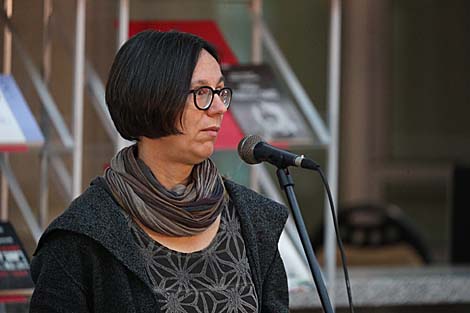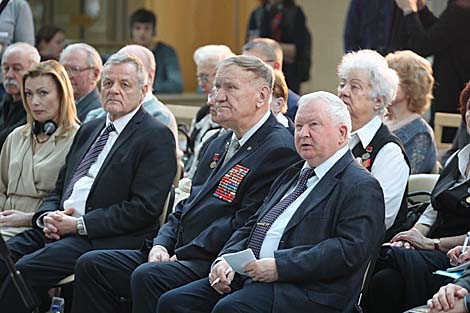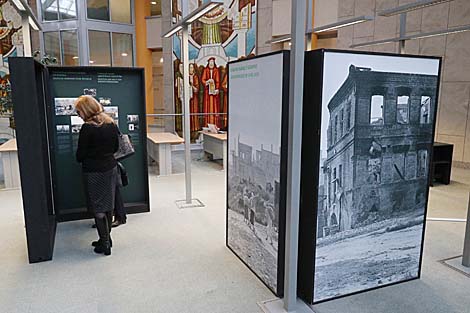Opinions & Interviews
Opinion: Memory of Belarusian death camps should be part of European culture of remembrance

MINSK, 18 March (BelTA) – It is important to integrate the information about the concentration camps in Belarus during World War Two into the European culture of remembrance. With our project we introduce the citizens of Europe to the places of mass extermination of people, including Ozarichi death camp, Astrid Zam, the executive director of the Dortmund International Education Center, told the media at the press conference in the National Library, BelTA has learned.
“Preserving the historical memory is among the major tasks of the Belarus-Germany traveling exhibition which is dedicated to Trostenets and Ozarichi death camps. It is essential to tell Europe about the places of mass extermination which existed in Belarus. Germany and Europe still do not know much about them and our exhibition provides information about these places to promote their integration into the European culture of remembrance. We aim to show the youth and children what the historical memory means for the present and thte future,” Astrid Zam said.
 The traveling exhibition has been on for over three years and has already visited more than 20 cities in Belarus, Germany, the Czech Republic, and Switzerland. It will soon go on display in Vienna.
The traveling exhibition has been on for over three years and has already visited more than 20 cities in Belarus, Germany, the Czech Republic, and Switzerland. It will soon go on display in Vienna.
Ozarichi was a complex of German concentration camps. In March 1944, the 9th Army of the Wehrmacht with General Josef Harpe in command set up three temporary concentration camps near the villages of Dert, Ozarichi, and Podosinnik. These death camps were used to exterminate contagious patients, handicapped and elderly people, women with more than two children, children under ten, and others whom the Wehrmacht considered inapt for work. Before the prisoners were freed by the 65th Army of the 1st Belarusian Front on 17 March 1944, some 9,000-13,000 people were killed there.
 The events are timed to mark the 75th anniversary of Ozarichi death camp liberation and are organized by the Belarusian National Library, Minsk Johannes Rau International Center for Education and Exchange, and the international public association “Understanding”.
The events are timed to mark the 75th anniversary of Ozarichi death camp liberation and are organized by the Belarusian National Library, Minsk Johannes Rau International Center for Education and Exchange, and the international public association “Understanding”.







 print version
print version make home page
make home page add to bookmarks
add to bookmarks

